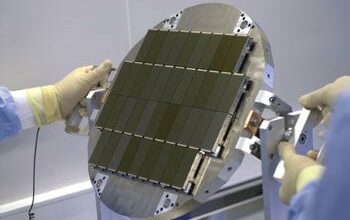The recent green light for the establishment of a European X-ray laser marks a pivotal milestone in the quest for advanced scientific instrumentation. By merging cutting-edge technology with innovative laser design, the European X-ray Free Electron Laser (XFEL) is poised to illuminate the intricate and often inscrutable realm of atomic and molecular structures. This narrative explores the implications of this development, unearthing its potential to revolutionize our understanding of matter at the subatomic level.
The inception of an X-ray laser embodies a marriage of physics and engineering, producing coherent X-ray beams that can probe materials with astonishing resolution. The advent of such technology offers unprecedented capabilities in imaging and characterization. The efficiency and temporal resolution of the X-ray laser render it an invaluable tool for interrogating the fundamental dynamics of systems ranging from biological macromolecules to complex nanostructures.
The XFEL employs an electron beam generated via a linear accelerator, which is then forced through undulators to produce intense, short pulses of X-ray light. The photonic output features a wavelength analogous to the dimensions of atoms and molecules, thus permitting investigations that were previously unattainable. The precise synchronization of electron bunches with laser output allows for time-resolved experiments, capturing dynamic processes in real-time, such as chemical reactions and biomolecular conformational changes.
In examining the multifaceted applications of the European XFEL, one must first consider its potential impact on structural biology. The detailed elucidation of protein structures plays a crucial role in understanding biological processes and designing pharmaceuticals. Traditional methods, such as X-ray crystallography, while instrumental, often suffer from limitations regarding the types of samples that can be effectively analyzed. The XFEL’s ability to conduct experiments on non-crystalline samples and in solution paves the way for advancements in structural analysis. Researchers can now glean real-time insights into transient states of biological macromolecules, impacting drug design and therapeutic interventions.
Moreover, the European XFEL opens a new frontier in materials science, facilitating the study of solid-state materials under various environmental conditions. The fine-tuning of the laser parameters enables scientists to explore phenomena such as phase transitions, magnetism, and superconductivity. By employing technique like diffraction and spectroscopy, the XFEL can provide detailed maps of electronic structures, revealing the interplay between atomic arrangement and material properties. This insight can catalyze the development of novel materials with tailored functionalities, thereby advancing technology in a myriad of applications, from electronics to renewable energy.
In the domain of chemistry, the X-ray laser presents an avant-garde platform for elucidating reaction mechanisms. The ability to observe and manipulate atomic and molecular systems with femtosecond precision allows chemists to dissect complex reaction pathways. With the XFEL, the temporal resolution is sufficient to capture fleeting intermediates, significantly enhancing our comprehension of catalytic processes and reaction dynamics. This level of understanding could result in groundbreaking advancements in catalysis, with ramifications for energy conversion and environmental remediation.
Furthermore, the societal implications of this technological advancement cannot be overlooked. The impact on scientific collaboration is profound; as a central nexus for X-ray research, the European XFEL fosters transnational partnerships. Collaborative projects across disciplines will enable researchers to share insights and expertise, ultimately accelerating the pace of discovery. Additionally, the increase in publicly accessible data can democratize scientific knowledge, engendering a new era of innovative ideas from diverse sectors of society.
Nonetheless, the establishment of the European X-ray laser is not without its challenges. The technical demands for maintaining the synchronicity of electron beams and laser output necessitate continuous investment in infrastructure and expertise. Furthermore, ensuring the sustainability of such facility requires navigating complex funding landscapes, particularly in a climate of competing scientific priorities. It is imperative that stakeholders recognize the long-term benefits of investing in such pioneering technologies, as the fruits of basic research often burgeon into societal advancements.
In panoramic view, the European XFEL promises to catalyze a paradigm shift in our understanding of the atomic world. The unprecedented capabilities of X-ray lasers will facilitate the unveiling of previously obscured phenomena across diverse fields of science. As researchers harness the potential of this revolutionary tool, curiosity will undoubtedly thrive, driving inquiries into the unknown and fostering innovative solutions to some of humanity’s most pressing challenges. The age of the X-ray laser not only illuminates the minutiae of matter but also draws back the curtain on the vast expanse of scientific possibilities that lie ahead.
In conclusion, the dawn of the European X-ray laser heralds an era replete with opportunities for advancing human knowledge. As it comes to fruition, the interdisciplinary collaboration it ignites, coupled with the transformative potential it harbors, promises to redefine our scientific landscape, opening doors to discoveries that could shape the future of technology, health, and, ultimately, society itself.












